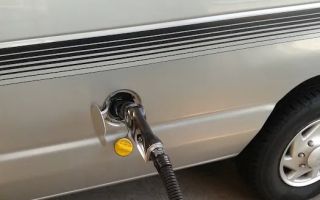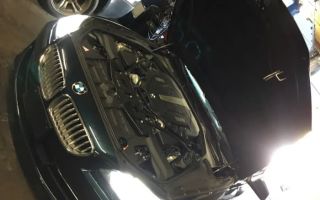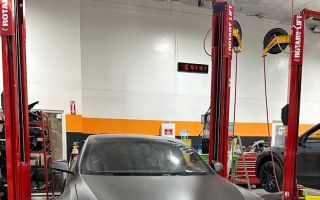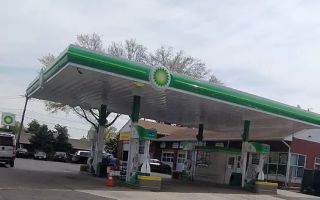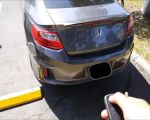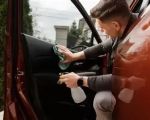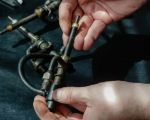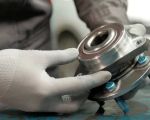- 1-What-Does-the-Knock-Sensor-Harness-Do
- 2-Signs-of-a-Faulty-Knock-Sensor-Harness
- 3-How-to-Diagnose-Knock-Sensor-Harness-Problems
- 4-Repairing-or-Replacing-the-Knock-Sensor-Harness
- 5-Real-World-Examples-of-Knock-Sensor-Issues
- 6-How-Rescue-and-Towing-Can-Help-with-Engine-Diagnostics
1. What Does the Knock Sensor Harness Do?
To truly understand your car’s knock sensor harness, you need to see it as a crucial link between your engine’s brain and its heart. The knock sensor itself detects abnormal vibrations, known as “knocks” or “pings,” which occur when fuel combusts unevenly in the engine cylinders. The harness is the electrical bridge that transmits this information to your vehicle’s Engine Control Unit (ECU). Without it, the ECU can’t adjust ignition timing or fuel mixture properly — potentially leading to damage or performance loss.
Think of it this way: the knock sensor harness acts as a messenger ensuring the ECU responds to even the faintest engine irregularities. It’s a small but mighty part of your vehicle’s wiring system that ensures your car runs efficiently and prevents expensive repairs down the road.

United Towing Service Inc.
26170 Adams Ave, Murrieta, CA 92562, USA
2. Signs of a Faulty Knock Sensor Harness
2.1 Loss of Engine Performance
If your car feels sluggish or unresponsive when accelerating, it may be due to a faulty knock sensor harness. When the sensor’s signal doesn’t reach the ECU, your vehicle switches to a default safety mode — reducing power to prevent damage. This might feel like you’re driving with less horsepower or experiencing delayed throttle response.

Pick Your Part - Help Yourself
1232 Blinn Ave, Wilmington, CA 90744, USA
2.2 Illuminated Check Engine Light
One of the first signs drivers notice is the dreaded check engine light. Diagnostic codes such as P0325 or P0330 often indicate issues with the knock sensor or its wiring. These warnings shouldn’t be ignored, as they may lead to long-term engine wear if not addressed promptly.
2.3 Poor Fuel Efficiency and Increased Noise
A damaged harness can prevent the sensor from reporting misfires, leading to poor combustion efficiency. You may hear rattling or pinging noises — especially when accelerating uphill. Over time, this not only wastes fuel but can also cause damage to pistons and valves.
3. How to Diagnose Knock Sensor Harness Problems
3.1 Visual Inspection
Start by inspecting the wiring harness near the knock sensor. Look for frayed wires, corrosion, or loose connections. In older vehicles, the harness can become brittle due to heat and vibration, leading to intermittent signal loss. Cleaning connectors and ensuring a snug fit can often fix minor issues.
3.2 Using a Multimeter
A multimeter is an essential tool for testing electrical continuity. By measuring voltage output and resistance, you can determine whether the harness is transmitting signals correctly. A reading of infinite resistance indicates a break in the wiring — a clear sign that replacement is necessary.
3.3 Professional Diagnostic Tools
For those who prefer expert insight, auto service providers like Rescue & Towing use advanced diagnostic scanners to detect even the most subtle electrical failures. These tools can pinpoint whether the issue lies with the sensor itself or the harness that connects it to the ECU, saving you both time and unnecessary repair costs.
4. Repairing or Replacing the Knock Sensor Harness
4.1 When Repair Is Possible
If the damage is limited to exposed or corroded connectors, a repair may be sufficient. Using heat-shrink tubing, soldering connections, and applying dielectric grease can restore conductivity and prevent moisture intrusion. However, repairs should only be attempted if the wire integrity is otherwise intact.
4.2 Full Harness Replacement
In more severe cases, such as melted or shorted wires, replacement is the only safe option. Knock sensor harnesses are typically affordable, but their location — often under the intake manifold — can make replacement labor-intensive. Many drivers prefer professional installation to ensure proper torque and connection, especially since incorrect installation can trigger new fault codes.
4.3 Preventive Maintenance
Once replaced, keeping the harness protected is key. Avoid pressure-washing engine bays, and regularly check wiring insulation during oil changes. Simple habits like these can prevent future issues and keep your car’s performance consistent.
5. Real-World Examples of Knock Sensor Issues
Consider the case of a 2010 Toyota Camry owner who noticed a persistent check engine light and a noticeable drop in fuel efficiency. After several failed attempts to replace the knock sensor itself, a technician discovered a broken wire inside the knock sensor harness. Replacing the harness immediately restored performance and eliminated the error codes.
Similarly, an SUV owner shared online that after off-road driving through mud and water, the harness had corroded internally, causing false sensor readings. This example highlights the importance of environmental awareness — even minor exposure to moisture or dirt can impact electrical components significantly.
6. How Rescue & Towing Can Help with Engine Diagnostics
Rescue & Towing specializes in helping car owners identify and fix complex electrical and engine-related issues, including faulty knock sensor harnesses. Their experienced mechanics use modern diagnostic systems to ensure accuracy, preventing misdiagnosis and saving customers from unnecessary part replacements. Whether you’re stranded with a check engine light or planning preventive maintenance, their expert support can help you stay on the road with confidence.
Understanding your car’s knock sensor harness gives you the knowledge to respond quickly when problems arise. With the right maintenance and expert help from Rescue & Towing, you can keep your vehicle’s performance smooth, efficient, and reliable for years to come.






